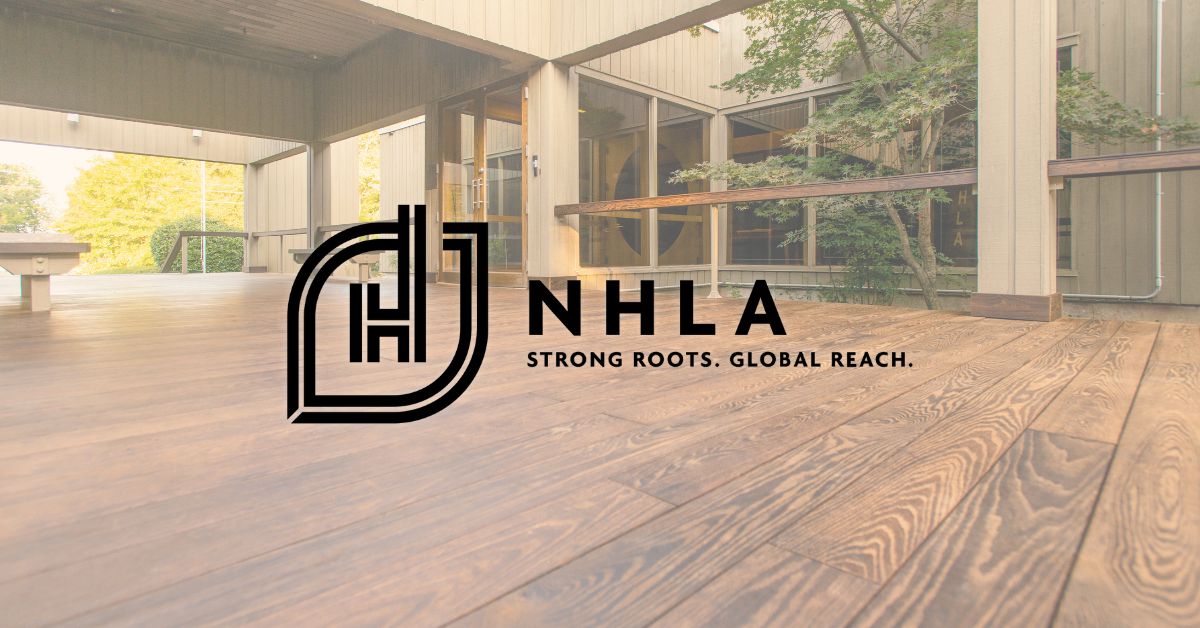Member Insights: The Future of Red Oak in Cost-Driving Market
Welcome to Member Insights, a new section in Hardwood Matters for sharing
your thoughts and experiences on the hardwood industry. We invite you to contribute!
The Future of Red Oak in a Cost-Driven Market
Submission by BILL COURTNEY, CEO of Classic American Hardwoods, Inc.
In a letter originally sent on August 3, 2017, Bill Courtney, CEO of Classic American Hardwoods, Inc., warned the U.S. hardwood industry about the dangers of exporting raw logs to China. He observed that Chinese sawmills are using these logs to produce cheaper lumber, undercutting U.S. prices and threatening the long-term viability of the U.S. hardwood market. Despite the preference for higher-quality U.S.-produced lumber, the price difference drives customers to buy the Chinese-sawn alternatives. Courtney urged the industry to reconsider this practice, emphasizing that it’s within their control to protect their resources and prevent the U.S. hardwood industry from suffering the same fate as the outsourced textile and furniture industries.
To Those Who Make Their Livings in the United States Hardwood Industry:
This marks the first time, in over 20 years in the hardwoods lumber business, that I have ever felt compelled to speak out. Our fragmented, very independent industry can rarely agree on much. What fits in Appalachia doesn’t necessarily fit in the upper Midwest, and what makes sense in the Allegheny region may often seem ridiculous in the Southeast. Certainly, we all make our livings with a similar natural resource, but operationally, our approach can differ wildly and often be equally successful. Given this, I have always reserved comments about these different approaches, even when some made little sense to me because the truth is, while I like to think that I have a clear understanding of what my challenges and opportunities are in my little footprint of our industry, I admittedly have very little understanding what those challenges and opportunities look like for a similar business located 1000 miles away in a different hardwood producing region. So, while I often wonder why and how many competitors do things, I have kept those thoughts to myself so as not to open my mouth and demonstrate my own ignorance.
Having said all this, I am now convinced that we are currently engaging in a practice that is universal to all of our detriment regardless of region, and I hope to start some dialogue about it.
Yesterday, I returned from a 15-day visit to China. We were in three distinct markets during that time and visited many customers. These various customers were both manufacturers and wholesalers, all of whom were experiencing decent to very good business. The activity in each meeting was typical in Chinese sales calls. Hot tea, plant or warehouse tours, a bit of political banter regarding President Trump and North Korea, more hot tea, and then, of course, price negations for the sale of new products was a seemingly endlessly repeated process. While each meeting and customer obviously had its differences, the highlights just described always happened – and frankly, to my delight. It has been some time since I had been to China, and I thoroughly enjoyed all the time invested in visiting and putting faces to the names that I normally see on a daily sales ledger. After all, it doesn’t matter if we sell our products in Shanghai or Des Moines; personal relationships will always matter.
On this trip, though, a topic of interest was being discussed that was new. In the first couple of days, I thought maybe it was just a coincidence that every customer wanted to talk about it, but as time went on and appointments mounted, it became obvious that it was a topic that our customers were discussing among themselves. With not one single exception, in all of our meetings, it was brought up, and as I learned more and more, I became interested, then vested, and now concerned.
The export of US logs to Chinese sawmills is a problem, and history matters in understanding what is happening. The vast majority of Chinese sawmills are in the North. Certainly, others exist, but the North is where the sawmill industry has decades long roots. For many years, their business was cutting both Chinese species indigenous to the North and Russian species that came across the border. In the past few years, government policy changes threatened that industry’s existence. First, the Chinese government forbade the felling of trees. Second, the Russian government changed its policy for log exports, thus cutting the raw material for the sawmills. The result was that these Chinese mills and industries existed with no material to run through them.
Their answer, with the unprecedented growth in demand for US species, has been to buy US logs and beat us at our own game, and they are. Chinese-sawn US hardwoods are sold cheaper than US-sawn hardwoods, and it’s having a suppressing effect on our markets. Without exception, the customers we discussed this with would all rather have US-produced US hardwood lumber. Our grading is better, our drying is better, and our service is better. But, given the price spread, increasingly, more customers are at least supplementing their inventories with the Chinese sawmill products. Additionally, because it’s cheaper, the Chinese market is using this pricing to suppress US manufacturers’ pricing. The irony here is that we sell logs at high prices to Chinese export markets but then give back the gains when our lumber is sold cheaper than it should be because it’s competing with lumber sawn from our own raw material. It’s ludicrous, and even our customers agree.
After we began having these discussions daily with customers, we started asking what I think to be an obvious question. How much are we keeping prices down by exporting logs? So, we took a very unscientific poll of our customers, and the average of all the responses was 7%. In other words, if US lumber wasn’t available from Chinese sawmills, our own customers readily admit that they think our lumber prices would be an average of 7% higher than they are today! I admittedly don’t know about my competitors’ margin efforts, but we spend copious hours around here trying to figure out how to squeeze a point here and a point there out of production and price. We would go nuts over 7%, and our own customers are shaking their heads at us, wondering why in the hell we are giving that up.
This is what is happening today, but even more concerning is the question of tomorrow. Only a fool would fail to recognize China’s appetite for growth and willingness to invest and build. If we continue to sell our precious resources, what will happen to our industry? My guess is that in 1950, if you told folks in North Carolina that both the furniture and textile industries by 2010 would be gone and shipped off to Asia, they would have laughed at you, citing American work ethic, ingenuity, financial strength, etc. Are we going to be next? The difference in my mind is that these industries could be taken, but ours is wholly dependent on the amazing, renewable natural resource that sustains our lives. If we protect it, our industry will survive as no one else has what we have. But if we sell it off, and China sees our willingness to sell it, they will build sawmills, they will build kilns, they will consume it all if we let them, and who could blame them?
We are making a big mistake exporting logs. Currently, it’s costing us margin and market share, but if it grows, it could cost us much more. It is a conversation we must have as an industry because it affects us all regardless of location or approach. We are engaged in a foolhardy practice whose foresight is either blind or ignorant, and unlike many manufacturing industries who have succumbed to geo-economic forces outside of their control, this one is completely in our control, and I fear if we don’t act, future generations will do exactly what our Chinese customers did during our last two weeks’ visits – just shake their heads in disbelief.
Sincerely,
Bill Courtney
CEO, Classic American Hardwoods, Inc.
Share:
Related News & Blog

September 1, 2025

September 1, 2025
Questions?
Have questions or need any assistance regarding the NHLA Annual Convention & Exhibit Showcase?
